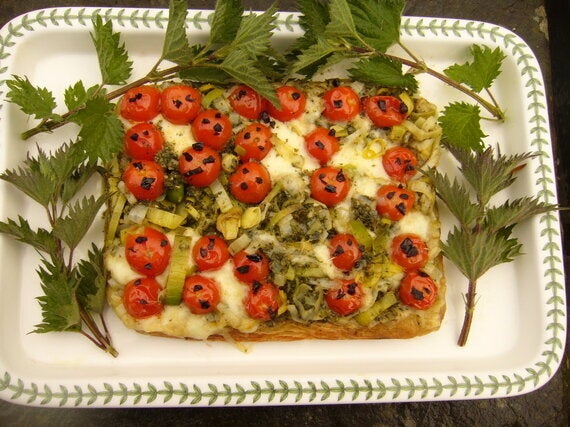
'The sting of the nettle is but nothing compared to the pain that it heals' is an old saying.
This suggests that our ancestors appreciated the natural anti-inflammatory properties of the perennial stinging nettle Urtica dioica. There is anecdotal evidence of the usefulness of nettles from Roman times to its use in Well Women clinics today. Pick nettles with care wearing plastic gloves but fear not when you reach the kitchen, for as soon as the leaves hit hot water, the sting is washed away.
I was rather surprised to see nettles on sale in a market recently but this is an obvious step from the sale of wild nettle cordial and artisan nettle clad cheeses. Renewal of nettle interest may be associated with times of subsistence but I like the idea of cooking with ingredients from times when folk lived from hand to mouth - cooking with simple foods that are readily and freely available to everyone.
Nettle leaves are rich in Vitamins A and C and the good news is that this wild edible can be found almost anywhere. Nettles are associated with human habitation. I noticed this on a visit to the now uninhabited, Shiant Isles in the Outer Hebrides, where nettles are most visible amongst house ruins.
Nettles for the kitchen should be picked whilst young. I tend not to cook with nettles beyond late May or after they have flowered. If you are looking for nettles in late spring, seek them out in shaded woods, where the shoots may still be young. Wear rubber gloves for obvious reasons.
Historically nettles have been used in soups. There is a recipe for St Columba's broth and more soup recipes from the ancient herbalists Culpepper and Gerard. I use wilted nettles in place of spinach in egg-based dishes, quiches and frittatas, and the leaves lend themselves to pesto. They are equally delicious pureed or wilted and can be mixed with root vegetables. Steep the leaves in cider vinegar to make Nettle vinegar or dry them in a food hydrator for tea infusions or sprinkles in savoury crumbles.
This fun and colourful recipe is taken from The Forager's Kitchen.
Ladybirds in Nettle Pesto Tart
For the Nettle Pesto:
50g young nettle leaves
Handful of wild garlic leaves (washed and dried)
25g Parmesan cheese
25g toasted pine nuts
Freshly ground black pepper
Juice half small lime
Approx 100ml Olive oil
Put all of the ingredients apart from the oil in a food processor and blend. With the machine running slowly add enough oil to make a thick paste
For the Tart:
Butter for greasing
25g butter
Large leek, washed and finely shredded
2tbsps nettle pesto (see above)
14-15 cherry tomatoes halved
125g mozzarella cheese cut into 1cm cubes
250g puff pastry
Flour for rolling
3 olives, finely chopped
Set the oven 220°C gas 6
Grease 18 x 14 rectangle shallow ovenproof dish.
Heat the butter in a frying pan and add the shredded leeks. Cook for 2-3 minutes but do not allow to brown. Add the pesto to the pan, stir well and remove from heat.
Put the cherry tomato halves, skin side down in the greased dish. Scatter the mozzarella over the top. Evenly spread the leeks and pesto over the top.
Roll the pastry to roughly fit the dish and place over the mixture. Turn the edges in, to make the pastry fit the dish.
Bake in the pre- heated oven for 15-20 minutes until the pastry is golden. Leave to cool for 2-3 minutes.
Turn the dish upside down over a serving dish and decorate the tomatoes with chopped olives to give the Ladybirds spots.